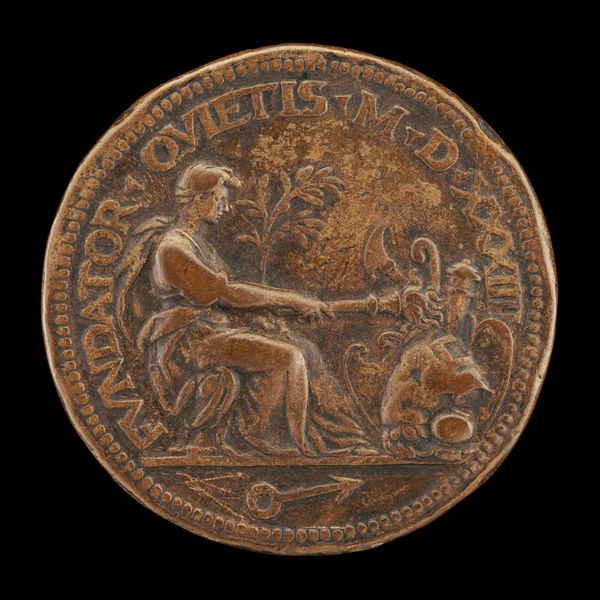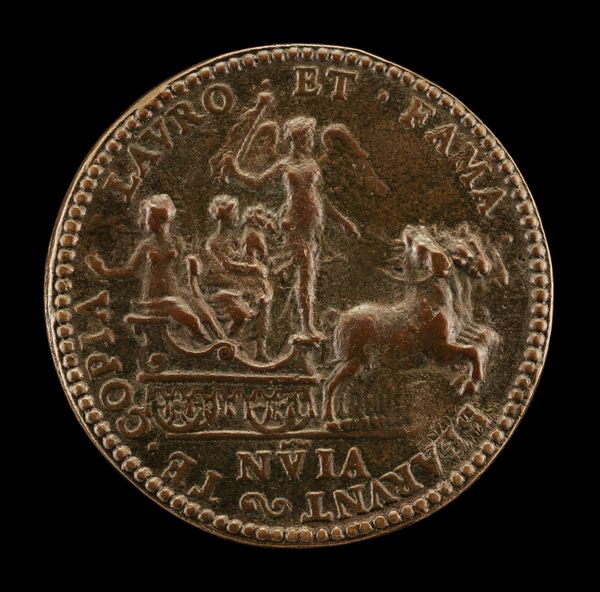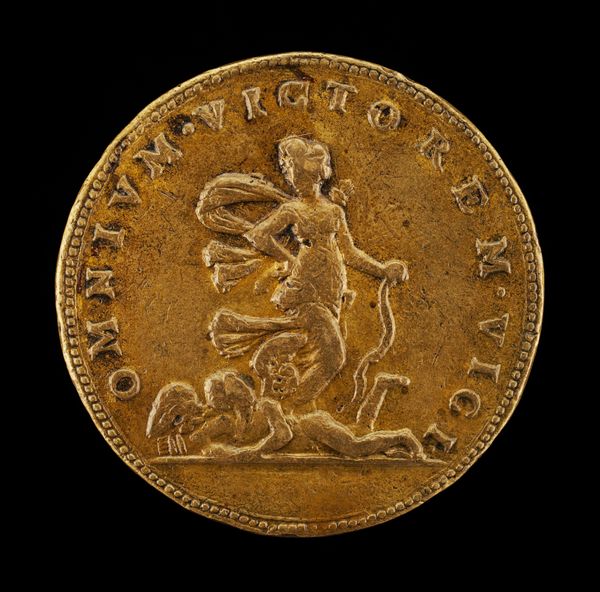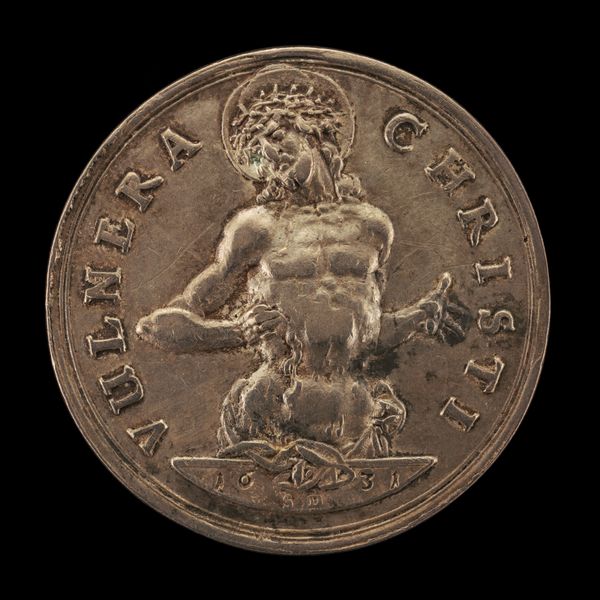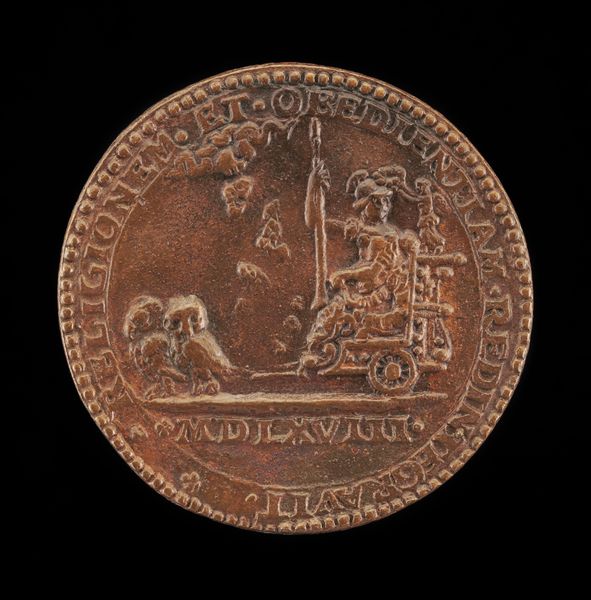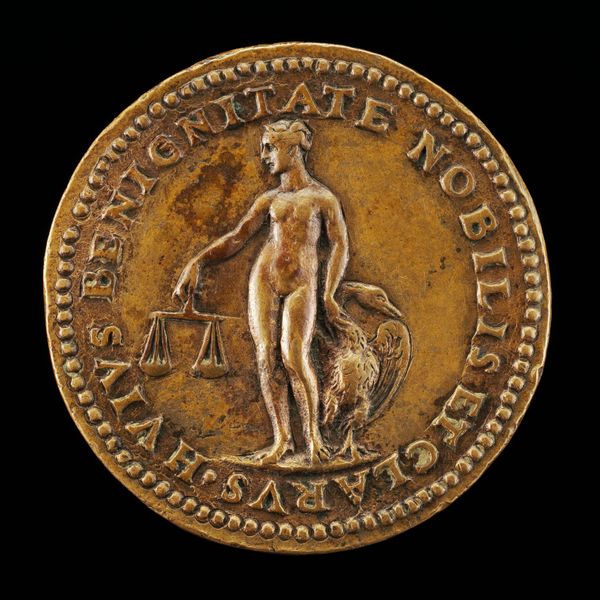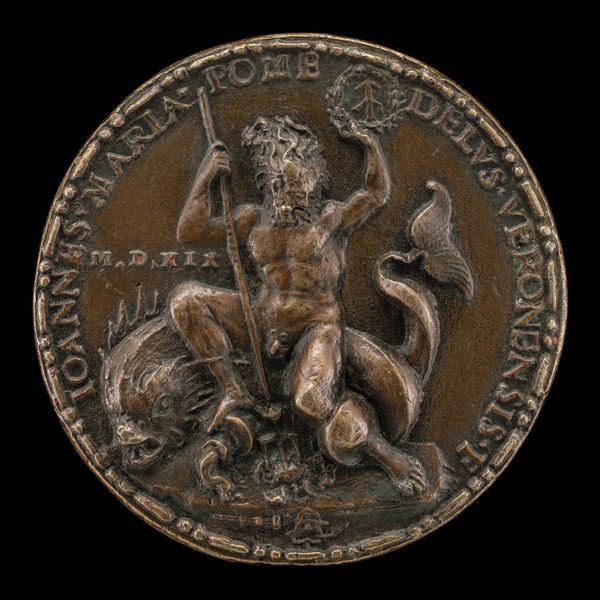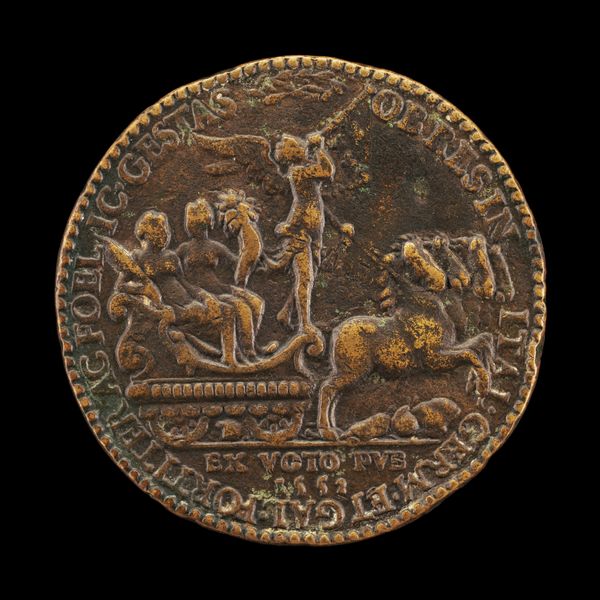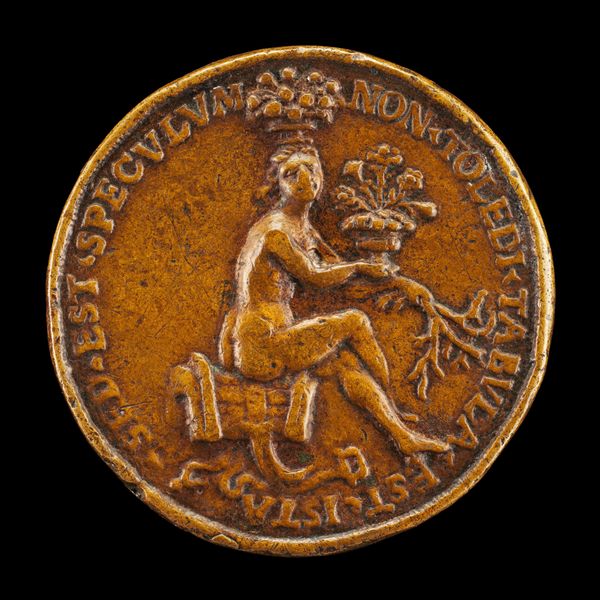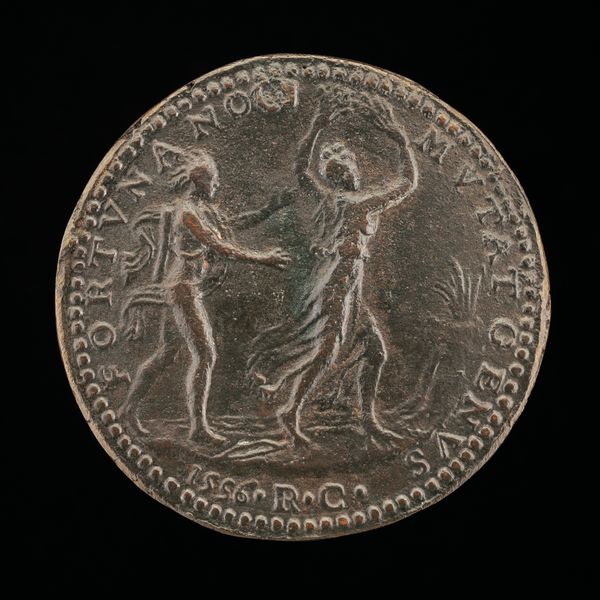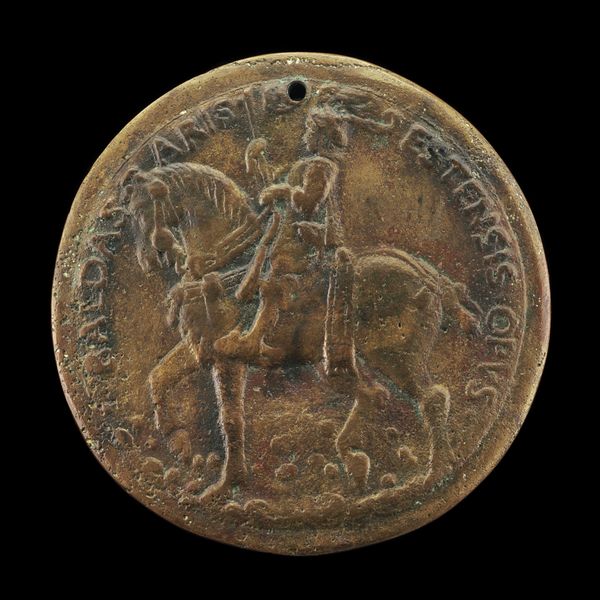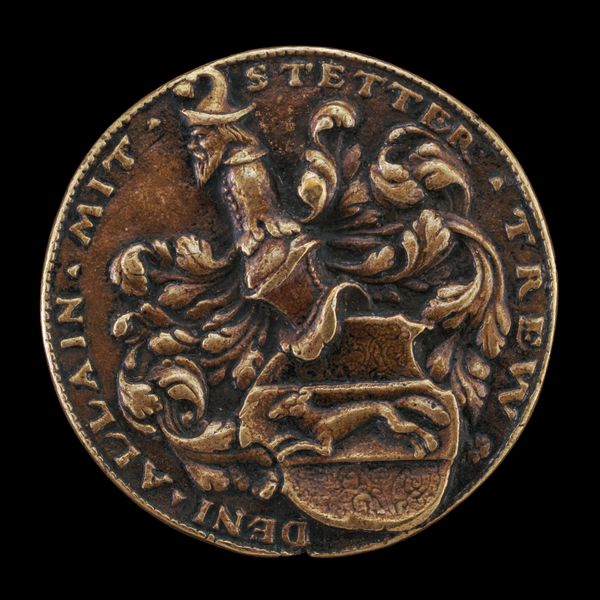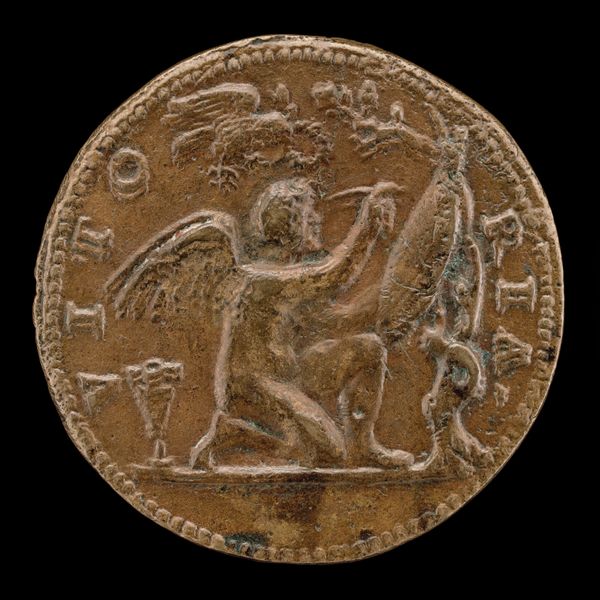![Seated Diomedes Holding the Palladium [reverse] by Giovanni Maria Pomedelli](/_next/image?url=https%3A%2F%2Fd2w8kbdekdi1gv.cloudfront.net%2FeyJidWNrZXQiOiAiYXJ0ZXJhLWltYWdlcy1idWNrZXQiLCAia2V5IjogImFydHdvcmtzLzA3MTZhMDFiLTliOTEtNDg3YS1iMmU1LWNiOTdkNTdhYjlhNS8wNzE2YTAxYi05YjkxLTQ4N2EtYjJlNS1jYjk3ZDU3YWI5YTVfZnVsbC5qcGciLCAiZWRpdHMiOiB7InJlc2l6ZSI6IHsid2lkdGgiOiAxOTIwLCAiaGVpZ2h0IjogMTkyMCwgImZpdCI6ICJpbnNpZGUifX19&w=3840&q=75)
Seated Diomedes Holding the Palladium [reverse] after 1515
0:00
0:00
relief, bronze, sculpture
#
portrait
#
medal
#
sculpture
#
relief
#
bronze
#
figuration
#
11_renaissance
#
sculpture
Dimensions: overall (diameter): 4.8 cm (1 7/8 in.) gross weight: 43.24 gr (0.095 lb.) axis: 6:00
Copyright: National Gallery of Art: CC0 1.0
Curator: This striking bronze relief is titled "Seated Diomedes Holding the Palladium [reverse]", created by Giovanni Maria Pomedelli sometime after 1515. What's your immediate take on it? Editor: Intriguing. The circular format lends itself to contemplation; the bronze is warm, almost melancholic, and the seated figure is perfectly framed by the inscription around the perimeter. Curator: Indeed. Medals like this one functioned as portable declarations of status, serving a purpose similar to printed books. Who commissioned the work, how they chose the imagery—Diomedes, the Palladium—and why bronze was deemed appropriate all reveal information about power relations and Renaissance society. Editor: From a formal perspective, notice how the artist uses line and texture to differentiate between Diomedes’s smooth skin, the roughly hewn seat, and the fluid drapery. The contrast pulls the eye. The Palladium, seemingly glowing, focuses the composition. It is this layering that gives the medal its visual punch. Curator: Consider too, the labor involved: the initial design, the carving of the die, the casting in bronze, the finishing. The production of each medal represented significant manual labor, making it a commodity with tangible social implications. Editor: Yet, despite the social implications you raise, it remains undeniable how cleverly the artist compresses so much sculptural detail onto such a small surface. The composition is balanced, almost self-contained. Diomedes is a powerful focal point with that heroic, idealized musculature. Curator: Yes, the appeal is clear! Though a powerful visual statement in bronze, let us consider how bronze became available in Renaissance Italy. Were workshops local and how were they staffed, and to what end? To celebrate specific heroism, perhaps, but how was such narrative manipulated by owners and distributors? Editor: Your point regarding its societal implications provides critical context for considering such artistic creations. My take as a Formalist remains fixed on the visual mastery encapsulated within such restricted borders. Curator: Yes, our different entry points help illuminate varied aspects of this compelling work of art. Editor: An important dialogue – between material realities and artistic achievement.
Comments
No comments
Be the first to comment and join the conversation on the ultimate creative platform.
